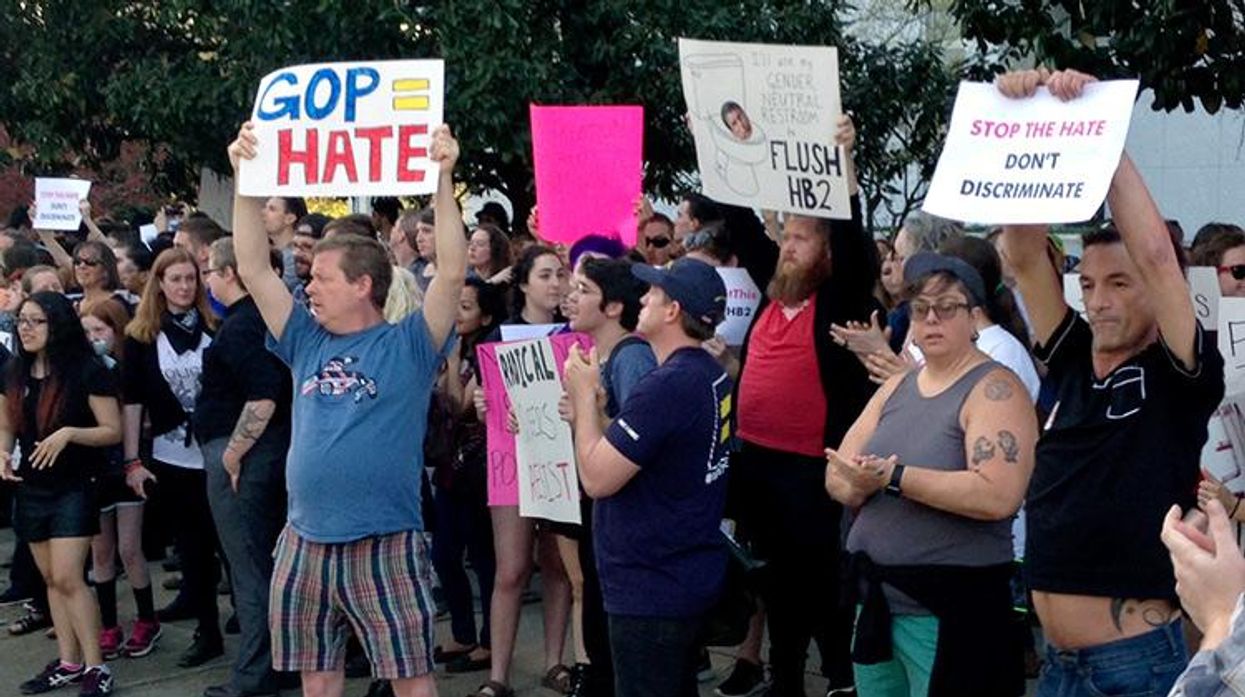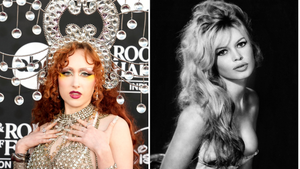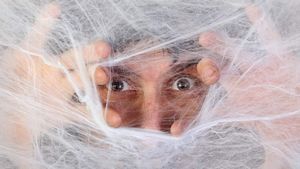As a nonbinary trans person who identifies and presents neither as a man nor a woman, I rarely feel comfortable using gendered bathrooms.
Most days, entering a bathroom means experiencing discomfort because of disapproving, confused looks and comments. But it also brings up memories of when I've been physically threatened and attacked because someone believes I'm in the "wrong bathroom."
Like that time in law school when a man pulled me out of the men's bathroom by my shirt, demanding that I pull down my pants to "show him" that I was a "real man." Or when I was at the Brooklyn Public Library and a security guard followed me into the women's bathroom, banged on my locked stall door, and screamed that if I didn't open the door immediately and leave, he would rip it down and pull me out.
As a white, masculine-presenting person, I know experiences like mine, although far too common, are also far from the worst ones. For trans people of color, who are generally overpoliced and surveilled, as well as feminine-presenting people who don't "pass" as men or women, racist, femme-phobic, and sexist acts of violence can feel like an inevitable risk with every trip to the bathroom -- or elsewhere.
According to a report published by the LGBTQ Policy Journal at the Harvard Kennedy School, nonbinary or genderqueer people in particular experience higher rates of some types of violence and discrimination than even their binary (male- or female-identified) transgender peers, who already face appallingly high rates of violence and discrimination, whether in schools, at home, at work, at the hands of law enforcement, or, yes, in bathrooms.
But this kind of violence doesn't happen because bathrooms are inherently unsafe spaces. It happens because laws like North Carolina's recently adopted House Bill 2 and the fear-stoking, transphobic narratives that justified its passage empower law enforcement and bathroom users to both subtly and violently police the boundaries of who qualifies as sufficiently "masculine" or "feminine," and who is "man" or "woman enough" to enter either room.
In an attempt to highlight the invisibility of some trans men in these conversations, and to point out what are likely undesired outcomes for supporters of transphobic legislation like North Carolina's, some trans people have utilized tactics that actually reinforce this gender policing. These mostly white, masculine-presenting trans men who "pass" as cisgender (nontrans) post pictures of themselves in women's bathrooms, sometimes using the hashtag #wejustneedtopee, to argue that so-called bathrooms bills, which require them to use the women's bathroom, are clearly absurd and actually create the dangerous dynamic that lawmakers claim to be fighting.
While these selfies rightly point out how wrong it is for any person to be forced to use a particular bathroom on the basis of their sex assigned at birth, these tactics are problematic for several reasons.
First, these visual tactics reinforce the idea that one can determine by looking at a person in which bathroom that individual "belongs." This places masculine-presenting women, feminine-presenting men, and nonpassing, nonbinary, or gender-nonconforming people who, like all humans, need to use the bathroom, at even greater risk.
These tactics do not say: All gender policing is wrong, and trans people feel unsafe in bathrooms because of it. Instead, they say: Gender policing that results in some of us being in the "wrong" bathroom is problematic. They fail to see that for many of us, all bathrooms that require us to claim a binary gender identity upon entrance are inherently the "wrong" bathrooms. They miss an opportunity to explain that the bathroom is only one of many sites where this dangerous, unnecessary policing takes place. Ironically, this tactic also ignores the fact that trans men and masculine-presenting trans people also face violence in bathrooms -- and are not just potential predators.
Further, these tactics problematically center the experiences of white trans men who "pass." While this segment of our community undoubtedly experiences transphobic violence, these men are also less likely to arouse the type of fear that makes these bills possible, and arguably least likely to experience the resulting violence. The fearmongering "bathroom predator myth" -- which has been soundly and repeatedly debunked -- is built on an unfounded fear that transgender women, who opponents like North Carolina Gov. Pat McCrory unapologetically describe as "men" lurking in women's bathrooms, are eager to assault the first unassuming cisgender woman or child who crosses their path. But in reality, trans women, feminine-presenting folks, and particularly people of color are exponentially more likely to be the victims of such violence. In fact, there have been zero verified reports nationwide of any trans person assaulting a cisgender person in a gender-segregated space. Ever.
So our pushback on these misguided, blatantly discriminatory laws must center the likely violence that trans women and gender-nonconforming people experience in bathrooms and other gender-segregated spaces. This does not preclude the acknowledgment that we all suffer under these systems, but we must also recognize that we do not all suffer equally or in the same ways.
Finally, these bathroom selfies actually reinforce the sexist paternalism that legislators use to pass these bills. Ironically, they tap into the legitimate fear that women and feminine-presenting people have of being attacked, by calling upon, for protection, the very people who are statistically, most likely to actually attack women -- their husbands or intimate partners.
Violence against women, feminine-presenting people, and trans people generally -- particularly people of color in all of these groups -- are real epidemics. None of these issues are remedied by maintaining separate gendered spaces in bathrooms or by reinforcing the idea that any person should be policed for being in the "wrong bathroom."
Instead of meeting transphobic fear with assurances that some of us rightly "belong" in one bathroom or another, maybe it's time to start interrogating why, as a society, we're so invested in fitting other people neatly into gendered boxes, and who gets left behind when we validate that way of thinking with our laws, or our activism.
 ASHE MCGOVERN, JD, is a policy analyst with LGBT Progress at the Center for American Progress, where they conduct research and advocacy on issues related to poverty and criminalization in LGBTQ communities. You can find them on Twitter @ashemcgovern.
ASHE MCGOVERN, JD, is a policy analyst with LGBT Progress at the Center for American Progress, where they conduct research and advocacy on issues related to poverty and criminalization in LGBTQ communities. You can find them on Twitter @ashemcgovern.


 ASHE MCGOVERN, JD, is a policy analyst with LGBT Progress at the Center for American Progress, where they conduct research and advocacy on issues related to poverty and criminalization in LGBTQ communities. You can find them on Twitter
ASHE MCGOVERN, JD, is a policy analyst with LGBT Progress at the Center for American Progress, where they conduct research and advocacy on issues related to poverty and criminalization in LGBTQ communities. You can find them on Twitter 

































































Charlie Kirk DID say stoning gay people was the 'perfect law' — and these other heinous quotes